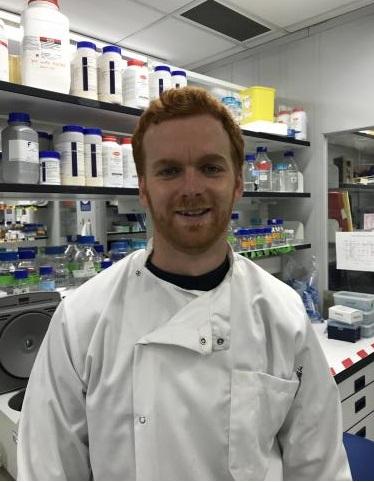
In this new paper, published in eLife, a team of researchers led by Dr. Tom Deegan in Karim Labib’s lab have recapitulated the ubiquitylation and disassembly of the eukaryotic replisome in a test tube using over 50 purified proteins. Every time a cell divides, it must make a complete, new copy of every one of its 46 chromosomes, each of which consists of a single DNA molecule that contains an individual’s genetic blueprint. Any mistakes made during the copying process are a threat to this genetic blueprint and can cause diseases such as cancer. Researchers in the Labib lab study the replisome, which is the molecular machine that controls the chromosome duplication process. At the core of the replisome lies the so-called CMG helicase, which performs the essential task of separating the two parental DNA strands during chromosome duplication. The assembly of this helicase complex on chromosomes is the critical step at the start of the chromosome duplication. Conversely, the disassembly of the CMG helicase, which is driven by the Cdc48/p97 ‘unfoldase’ and is triggered by ubiquitylation of CMG, is the key regulated step when chromosome replication finishes. Until now, the regulation that restricts CMG ubiquitylation to the end of chromosome duplication was unknown, as was the mechanism of CMG disassembly.
These new experiments, performed by Tom Deegan, Ryo Fujisawa, Cristian Polo Rivera and Pragya Mukherjee, support a completely new model for how CMG disassembly is regulated during chromosome replication. The authors show that a DNA structure that is only present at active replisomes provides a fail-safe block to prevent premature ubiquitylation (and thus disassembly) of CMG before chromosome duplication is completed. Once chromosome duplication is finished, this protective DNA structure is lost, and terminated replisomes are rapidly ubiquitylated and disassembled from fully replicated chromosomes. The experiments also define a molecular mechanism for how Cdc48/p97 disassembles CMG. Together, Tom and Ryo show that a minimum of 5 ubiquitins must be conjugated to CMG before it is disassembled. This so-called ubiquitin threshold provides additional protection against premature replication fork collapse, as inadvertent short chain ubiquitylation will not trigger replisome disassembly. The authors predict that this mechanism should be conserved for all ubiquitylated protein complexes that are disassembled by Cdc48/p97.
The study was led by researchers at the Medical Research Council Protein Phosphorylation and Ubiquitylation Unit, Dundee, with generous funding from the UK Medical Research Council, Cancer Research UK, and the Wellcome Trust.

